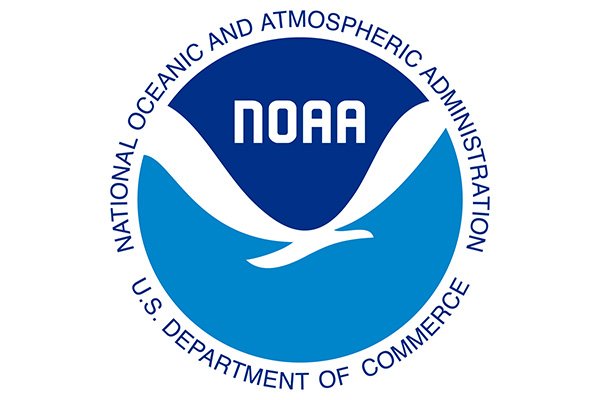Managing Change
Putting adaptation into action.
After adaptation goals have been developed, climate impacts have been understood sufficiently, and adaptation actions have been selected, it is time to implement adaptation options. Part of this process involves assessing the factors that can help and hinder implementation efforts. Additionally, monitoring and evaluating is important to understand how effectively the implemented actions are meeting the original adaptation goals.
In brief:
- After potential adaptation options have been identified, consideration is needed into which are most readily implementable and how they can be implemented.
- Identifying barriers and enablers can be a valuable step in determining which adaptation actions may be feasible and effective in practice.
- Adaptation is a continuous process that will require monitoring and evaluation of how implemented actions are working, and what other options may be needed as conditions and impacts change.
Putting adaptation into action
After adaptation actions have been selected and prioritized, further efforts are needed to implement, monitor and evaluate them in practice. This page focuses on the implementation phase, with links to resources below for ways to monitor and evaluate actions once they are implemented.
A variety of factors can help and hinder the implementation of adaptation actions. These factors are termed ‘enablers’ and ‘barriers’, respectively. Based on the IPCC definition, enablers of climate adaptation are factors that ‘make it easier to plan and implement adaptation actions, expand adaptation options, or provide ancillary co-benefits’. In contrast, barriers are factors that ‘make it harder to plan and implement adaptation actions’. It is important to identify these factors prior to implementation in order to understand where to allocate resources and develop processes to overcome barriers or support enablers.
Barriers and enablers can emerge and span multiple scales of the fishery as well as the broader social-ecological system. This includes users (e.g. harvesters, business owners), the resource system (e.g. features of the broader fishery system), the governance system (e.g. rules and regulations) and the broader social, economic and political setting. They can act independently of one another, or may interact in ways that create positive or negative feedbacks. In some cases barriers can be overcome and enablers can be leveraged. However, some barriers may be too large or complex to address, which requires focused efforts from multiple groups or creative ways that enable adaptation to continue despite their presence.
Through interviews with fisheries stakeholders in Northeast US fishing communities, our research identified a number of broad-scale barriers and enablers to adaptation that may need to be examined when implementing preferred adaptation actions. These are outlined below, and similar to the adaptation actions listed on the previous page, are not an exhaustive list. You can explore these barriers and enablers in greater detail here.
Barriers to adaptation action
Our research identified 13 barriers, which range from fisheries specialization and business consolidation, through to issues at the working waterfront, responsiveness of management systems and financial costs inhibiting action.

Enablers of adaptation action
Our research identified seven enablers of adaptation. These included adaptability of the industry, social networks and learning, fishermen-led conservation efforts and prioritizing shoreside services.

Beyond implementation of adaptation actions
Once an action has been implemented, it is important to monitor and evaluate how effectively it is meeting the original goals and performing under the changing environment. Monitoring and evaluation involves collecting information to track the progress of particular actions, assess the effectiveness and impact of adaptation actions, and evaluate whether objectives are being achieved. This process may include the development of qualitative or quantitative indicators to help measure progress, as well as collecting stakeholder feedback and input. Like the adaptation process, monitoring and evaluation steps are continuous and iterative. They rely on having specific measurable objectives to track progress, but objectives may also be revisited as the adaptation process proceeds and if priorities and values change due to changing ecological, social, economic and political conditions. Stakeholder engagement throughout the monitoring and evaluation process is critical for tracking progress and adjusting strategies as needed based on findings of the evaluation.
Monitoring and evaluation efforts associated with climate adaptation in fisheries are at an early stage. The resources listed below provide some guidance and general principles on Monitoring and Evaluation processes in other systems that may be applicable for adaptation in fisheries.
Useful tools and resources
Supporting resilience
Once you've planned for and are managing climate impacts, you can continue to support resilience in your fishing community or fishery.
Go back to Climate Adaptation Planning for Fishing Communities homepage.
Staff Contact
If you have any questions or concerns, please contact Dr. Kathy Mills.
Project Sponsor
The information within this site was developed with funding from the National Oceanic and Atmospheric Administration’s Climate Program Office under awards NA15OAR4310120 and NA19OAR4310384.
Read More
-
![New: Climate & Fisheries Planning Tool]()
New: Climate & Fisheries Planning Tool
The Science for Nature and People Partnership (SNAPP) working group on climate-resilient fisheries, led by GMRI Senior Research Scientist Dr. Kathy Mills, recently developed a …
Tidings
-
![FishSCORE2030: Supporting Climate-Resilience in Fisheries]()
FishSCORE2030: Supporting Climate-Resilience in Fisheries
GMRI Research Scientist Dr. Kathy Mills is leading a new collaborative effort to build an international network of scientists, stakeholders, and practitioners who will identify …
Tidings
-
![Gulf of Maine, Explained: Storms and Coastal Flooding]()
Gulf of Maine, Explained: Storms and Coastal Flooding
In this edition of Gulf of Maine, Explained, GMRI Postdoctoral Researcher and coastal hazards expert Dr. Hannah Baranes talks about how we can use the …
Gulf of Maine, Explained
-
![2023 Research Progress Update]()
2023 Research Progress Update
Each year, to keep you updated on our research team's progress, we develop a report showcasing some of our lab's achievements. More broadly, this report …
Reports




